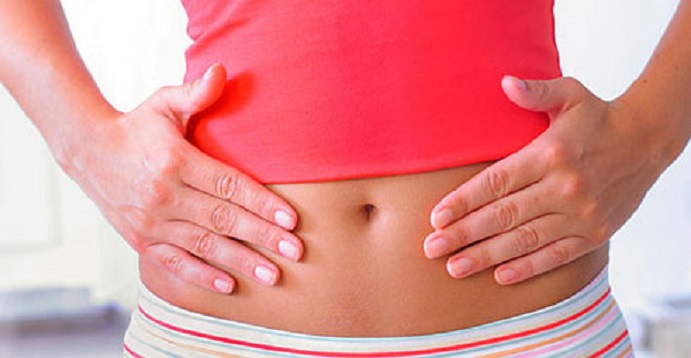The traditional side of period pains

Thandeka Moyo, Health Matters
A few weeks ago we commemorated Menstrual Hygiene Management Day.
Although I shared lots about how we can embrace menstruation, we did not tackle the traditional side of things.
One of our readers was quick to remind me that it’s not every Zimbabwean who will access healthcare for menstrual cramps known in Ndebele as isilumo.
He also helped me discover that way before modern medicine; our forefathers relied on bark, roots or leaves of trees, herbs and traditional foods to treat menstrual cramps.
Mrs Dorothy Gumede from the Zimbabwe National Traditional Healers’ Association said it is possible to cure pre-menstrual tensions using traditional means.
“Isilumo is as normal as other diseases or conditions that we are familiar with. From the olden days, before modern medicine became popular, our elders used to treat it,” she said.
“There are two types of menstrual cramps; the severe one which we call isilumo esinduna and the normal one. Those who have the severe cramps normally vomit during their menses, suffer weakened bodies and a lot of pain around the abdomen.”
Mrs Gumede said traditionally, it is believed that menstrual cramps can be transmitted from one person to the next.
“There are a lot of indigenous trees, roots and herbs available to address menstrual cramps. It’s a pity I can’t say out the herbs as we normally encourage women and girls to consult their elders for advice so they also get life skills,” she said.
“They can also inquire from their grandmothers and old women so that they don’t misuse or overdose on the traditional medicine. Women should also be vigorous in learning more about grooming, hygiene and diet associated with such issues.”
A local traditionalist said if one is considering using herbs to manage menstrual cramps, it’s important to consult the family doctor first to weigh the pros and cons.
He said magnesium, a mineral found naturally in foods such as green leafy vegetables, nuts, seeds, and whole grains is also recommended for menstrual cramps.
It is also available as nutritional supplements. Magnesium helps to regulate blood sugar levels and is needed for normal muscle and nerve function, heart rhythm, immune function, blood pressure and for bone health.
In 2001, researchers with the Cochrane Collaboration reviewed three small studies that compared magnesium and a placebo for menstrual cramps.
Overall, they found that magnesium was more effective than placebo for pain relief and the need for additional medication was less with magnesium use.
In the studies, there was no significant difference in the number of side effects or adverse effects between the magnesium and the placebo.
These magnesium-rich foods can be bought from vendors on many of our street corners, supermarkets and from the market anytime.
High doses of magnesium, however, may cause diarrhoea, nausea, loss of appetite, muscle weakness, difficulty in breathing, low blood pressure, irregular heart rate, and confusion.
It can interact with certain medications, such as those for osteoporosis, high blood pressure (calcium channel blockers), as well as some antibiotics, muscle relaxants, and diuretics.
Online sources suggest that during menstruation, it’s a good idea to avoid foods that cause bloating and water retention. Some of the biggest culprits include fatty foods, alcohol, carbonated beverages, caffeine and salty foods.
Reducing or cutting out these foods can help alleviate cramps and decrease tension. Instead, try soothing (caffeine-free) ginger or mint teas or hot water flavoured with lemon which can easily be accessible from our neighbour’s trees. If you need a sugar fix, snack on fruits like strawberries or raspberries.
Maintaining a healthy diet and keeping a regular exercise regime can go a long way to preventing menstrual pain.
One study found significant differences between period pain in women who maintained a healthy lifestyle and those who didn’t. Generally, a diet geared toward decreasing menstrual pain should be high in minimally processed foods, fibre, and plants.
Women can try natural foods that include papaya (ipopo), which are rich in vitamins and brown rice which contains vitamin B6 that may reduce bloating.
Walnuts, almonds, and pumpkin seeds (intanga zethanga) are rich in manganese, which eases cramps.
Olive oil and broccoli, which contain vitamin E, are also recommended for women during that time of the month.
Chicken, fish, and leafy green vegetables contain iron, which is lost during menstruation. Flax seeds contain omega-3s with antioxidant properties, which reduce swelling and inflammation.
Another essential mineral is boron which helps your body absorb calcium and phosphorus. It also reduces menstrual cramps.
Foods with high concentration of boron include avocados, peanut butter (idobi), prunes, chickpeas and bananas.
There was no way I could share the natural and traditional remedies to treating menstrual cramps without talking about water.
It sounds odd, but drinking water keeps your body from retaining water and helps to avoid painful bloating during menstruation.
Warm or hot water is usually better for cramps, as hot liquids increase blood flow to your skin and may relax cramped muscles.
Looking forward to your feedback on Twitter handle @thamamoe or via email on [email protected]












Comments